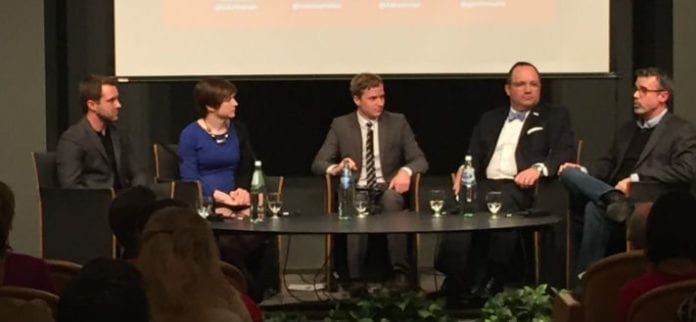Italian Embassy hosts Digital Diplomacy panel discussions
WASHINGTON – Since late 2012, diplomats at the Italian Embassy in Washington, D.C., have hosted a series of events called Digital Diplomacy.
The goal of the series is to engage, in an academic setting across multiple schools of thought, about the effect the interconnected wireless digital world is having on international relations, diplomacy and global development. Previous events have attracted high-profile academics such as Anne-Marie Slaughter and Alec Ross in an effort to facilitate discussion on these issues.
The most recent event, held Jan. 29, was no different. For this installment, the Italian Embassy convened a panel of experts with practical experience in using technology for diplomatic and social purposes.
Moderated by John Hudson, a correspondent for Foreign Policy Magazine, the panel included: Jake Brewer, representing Change.org; Garth Moore, digital director for the ONE campaign; Aaron Sherinian, communications director of the United Nations Foundation; and Moira Whelan, the U.S. deputy assistant secretary for digital strategy.
The discussion was positive and upbeat, with panelists at times overcome with excitement at the broad implications digital technology – especially the wireless kind – had for their respective fields. Civil society groups such as Change.org and ONE described Twitter and viral marketing as a means to mobilize support like never before.
The U.S. Department of State viewed mobile media as an effective way to engage a large number of people on a massive scale, providing the U.S. viewpoint of unfolding events. Undersecretary Whelan was quick to point to the Ukraine crisis and former Ambassador Michael McFaul’s earnest engagement with Russian citizens via Twitter.
The United Nations Foundation, which is a nonprofit organization that manages the U.N.’s global development goals, seemed the most engaged to practical application of wireless technology. As one member of the U.N. group attending Digital Diplomacy said, “The U.N. Foundation’s goals are to push access to digital technology, especially mobile banking, to help lift the world out of poverty.”
Although the enthusiasm for the use of wireless technology in public policy is high, the picture is not entirely optimistic.
When asked about how mobile interconnectedness helped contribute to the outbreak of measles in California and the resurgence of polio in some parts of the world – attributed to the ease with which people were able to access, then reinforce, false assumptions about vaccines – the panel was accepting of the potential for such negative side-effects.
Brewer made the point that bad information was more easily spread than good information due to the nature of viewing algorithms.
“Bad information is like candy and good information is like vegetables,” he said.
Despite the shortcomings, challenges and the potential to do harm, the conclusion that has been reached by civil society and government leaders is that the world is becoming more and more linked together through digital technology.

